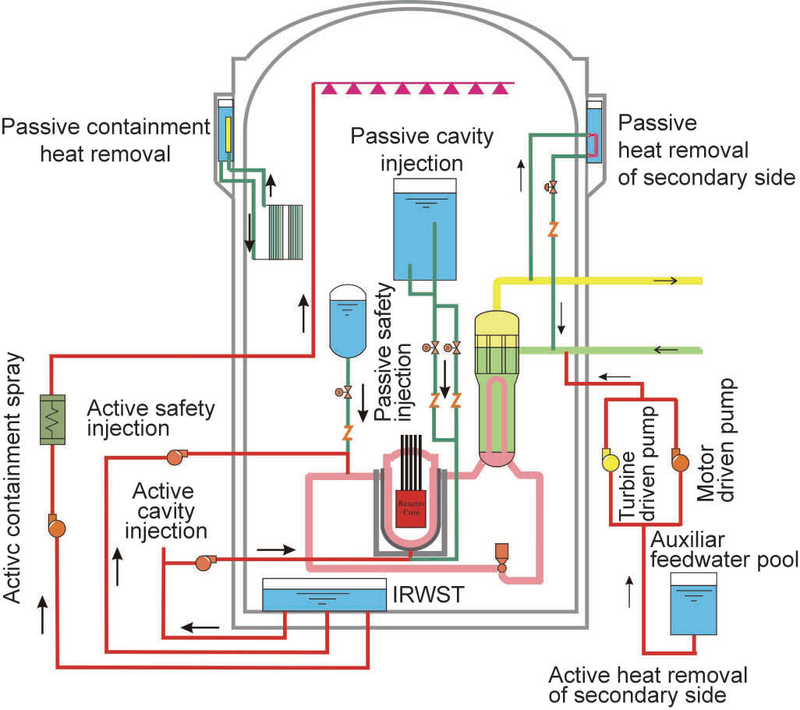Nuclear Reactors 672 - China Has Decided To Use Their Own Hualong One Reactor Design To Expand Their Nuclear Reactor Fleet
Hualong one,_cooling_systems_schemata.png

China has been a strong proponent of nuclear power. They have announced ambitious programs to build and operate many new nuclear power reactors to feed their growing economy with the electricity it needs. However, the 2011 Fukushima disaster had a serious impact on their ambitious building program. Now after a few years of scaled back activities, the Chinese are again moving forward with plans for the construction of many new reactors.
For a long time, foreign manufacturers of nuclear power reactors saw China as a great place to build their new designs for display to potential buyers. Chinese plans included their intention to build new reactors based on designs from France, the U.S. and Canada.
In 2006, China and the U.S. signed a technology transfer agreement that made the new Westinghouse AP1000 nuclear power reactor the design of choice for China’s nuclear ambitions. China also announced that advanced third generation technology would be used as a result of safety reviews carried out after the Fukushima disaster.
By the time that the AP1000 and the EPR reactors were finished and ready to be brought online in China after schedule delays and cost overruns, the new Chinese Hualong One home-grown reactor design appears to be as viable as those foreign designs. China has not yet completed its first Hualong One reactor but they express great confidence that it will not suffer construction delays and will be able to compete with foreign designs on cost and safety.
China has decided to construct a Hualong One as its first new reactor project in almost three years. Construction will begin at a site in Zhangzhou later this year. The Zhangzhou site was originally going to host an AP1000 reactor.
Li Ning is a nuclear scientist and dean of the College of Energy at Xiamen University. He said, “The problem with AP1000 – the delays, the design changes, the supply chain issues and then the trade problems – has forced their hand, and it has become Hualong.” He also remarked that the licensing procedures in China would be a big advantage for the Hualong One. He said, “For the Hualong, there are four reactors already under construction and one of them is near completion already. It is a Chinese design so it wouldn’t be very hard to license the next four.”
EDF, the state-run utility in France, assisted in the construction of the EPR project in Guangdong province. They have declined to comment on the change in China’s nuclear design choice. Westinghouse, which has undergone bankruptcy since the technology transfer deal was inked, also did not respond with respect to Chinese plans.
China has not just selected the Hualong One design for domestic use. They also have serious ambitions to sell Hualong Ones to foreign customers. Currently, the Chinse are constructing a Hualong One project in Pakistan, The Hualong One is also a contender for nuclear projects in Argentina and Britain.
Li Xioming is the assistant general manager of the state ownded China National Nuclear Corporation. (CNNC). He recently said, “The technologies are now just about the same as those of the United States, France and Russia. This is the foundation that we will rely on for our future survival and our international competitiveness.”
“China has already become one of the small number of countries that has independently mastered third-generation nuclear power technology, and it has the conditions and comparative advantages to scale up and go into mass production,” he said at an industry conference.